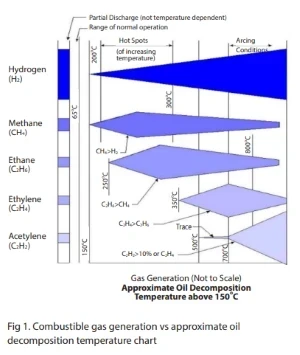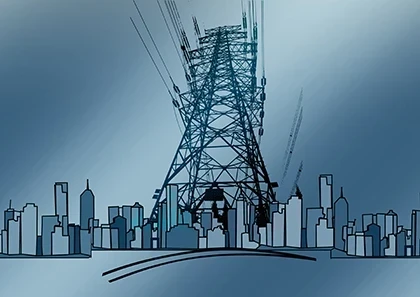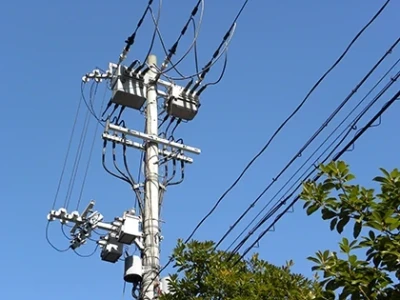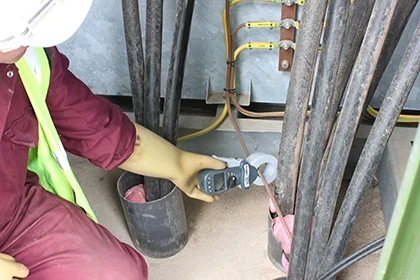Transformer Monitoring
Renewable Insulation Liquids for Transformers
Advancements in Dissolved Gas Analysis: Risk Assessment
Transformer Monitoring

Dielectric Voltage Testing – Standard Methods
There are two standard methods from ASTM International: D877, Standard Test Method for Dielectric Breakdown Voltage of Insulating Liquids Using Disk Electrodes, and D1816, Standard Test Method for Dielectric Breakdown Voltage of Insulating Oils of Petroleum Origin Using VDE Electrodes.
VDE stands for Verband Deutscher Electrotechniker—the Association for Electrical, Electronic, and Information Technologies— a German standards organization similar in function to the Institute of Electrical and Electronics Engineers (IEEE) in the United States. The D1816...
Related Articles

Advancements in Dissolved Gas Analysis: Risk Assessment
In general, the purpose of periodic screening with DGA for power transformers is risk assessment. Is any transformer likely to fail in service? If so, how severe is the problem? Previous articles in this series have described ways to improve DGA interpretation. In this article we provide a glimpse...

Reliability-based DGA: Using reliability statistics to relate dissolved gases to transformer failure
Dissolved gas analysis began as a simple "sniff" test: a technician would open the valve and smell the head-space gas, hoping not to detect the sharp odor of acetylene that could signal a problem. Today, there are guidelines and procedures for DGA testing (namely the IEEE C57.104 and IEC 60599...

Hydrogen Monitoring in the Transformer Headspace Compared to Traditional In-Oil Monitoring
By Chris Rutledge, Product Manager, Dynamic Ratings, Inc. Introduction The utilization of online dissolved gas analysis monitoring has proven to be one of the most effective predictors of overall transformer health and condition. A wide range of monitoring systems are available, offering multiple...

How to Improve Transformer Protection
Using symmetrical components for fault discrimination in differential protection BY IMRAN RIZVI, ABB Inc. Classical differential protection schemes are subject to ghost differential currents due to current transformer (CT) saturation and magnetization currents. Several methods are used to counter...

Hydrogen Monitoring in the Transformer Headspace Compared to Traditional In Oil Monitoring
The utilization of online dissolved gas analysis monitoring has proven to be one of the most effective predictors of overall transformer health and condition. A wide range of monitoring systems are available, offering multiple costs, features, and benefit combinations. Hydrogen MonitoringSingle or...

Dielectric Voltage Testing – Standard Methods
There are two standard methods from ASTM International: D877, Standard Test Method for Dielectric Breakdown Voltage of Insulating Liquids Using Disk Electrodes, and D1816, Standard Test Method for Dielectric Breakdown Voltage of Insulating Oils of Petroleum Origin Using VDE Electrodes. VDE stands...

Case Study: Rapid Changes in Bushing Health
IntroductionContinuous online monitoring of bushings provides real-time information which can result in the early detection of a possible failure. Challenge: A Major AlarmA prominent U.S. utility was looking for a way to improve system reliability for their 138kV assets. They researched and...

Hydrogen Monitoring in the Transformer Headspace Compared to Traditional In-Oil Monitoring
By Chris Rutledge, Product Manager, Dynamic Ratings, Inc. Introduction The utilization of online dissolved gas analysis monitoring has proven to be one of the most effective predictors of overall transformer health and condition. A wide range of monitoring systems are available, offering multiple...

The Distribution Transformer - Critical Power System Component
By R.W. Hurst, Editor A distribution transformer is a critical component of the electrical power system, used to reduce the voltage of electrical energy for electric power distribution to end-users. It plays a vital role in voltage regulation and load management, ensuring the efficient and reliable...

Grounding Transformers Explained
By R. W. Hurst, Editor Grounding transformers are used to provide a path to ground for unbalanced load current and for fault currents on systems where a suitable ground is otherwise not available. Grounding transformers are normally constructed with one of the two configurations: Zig-Zag (Zn) with...
